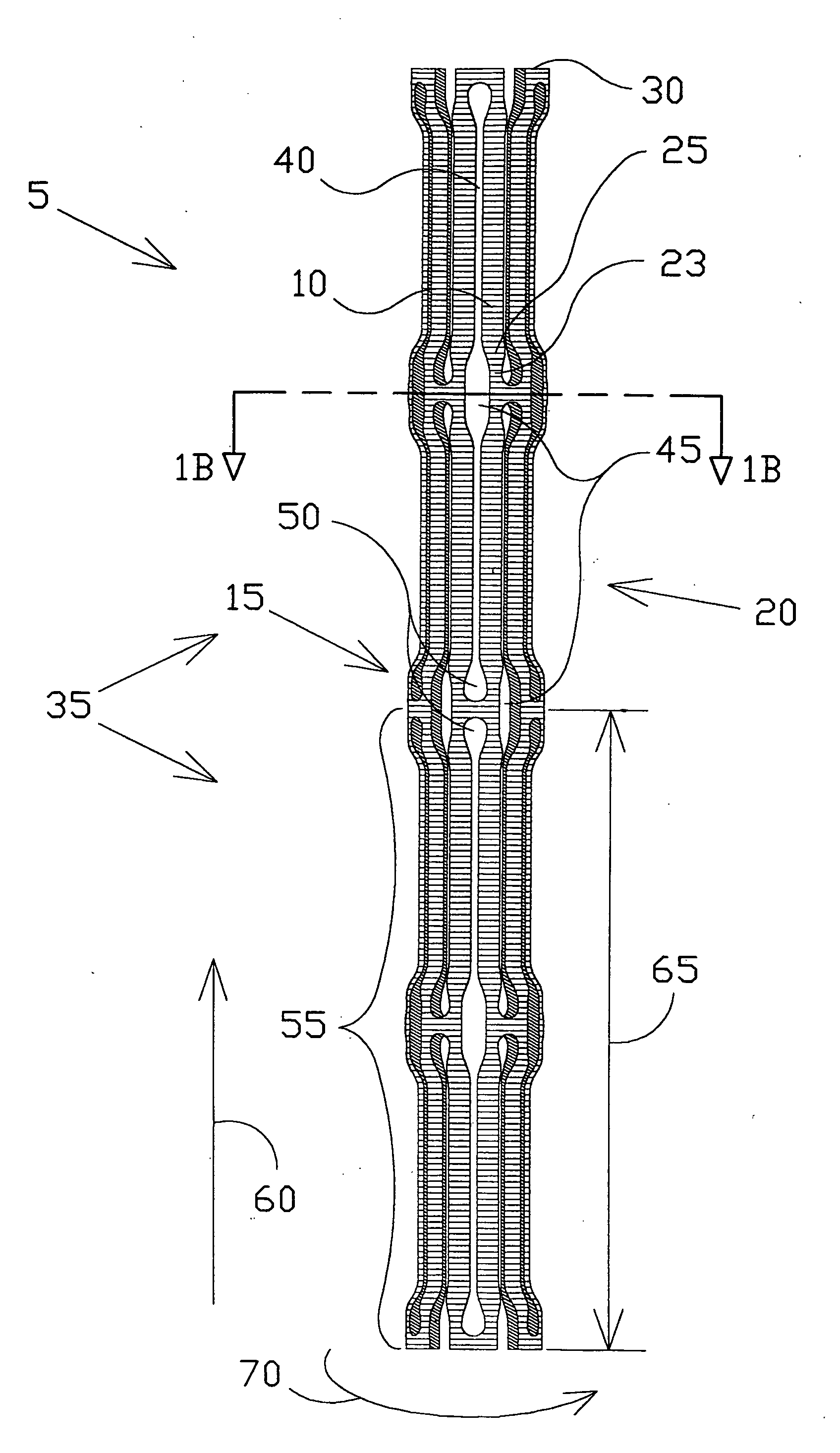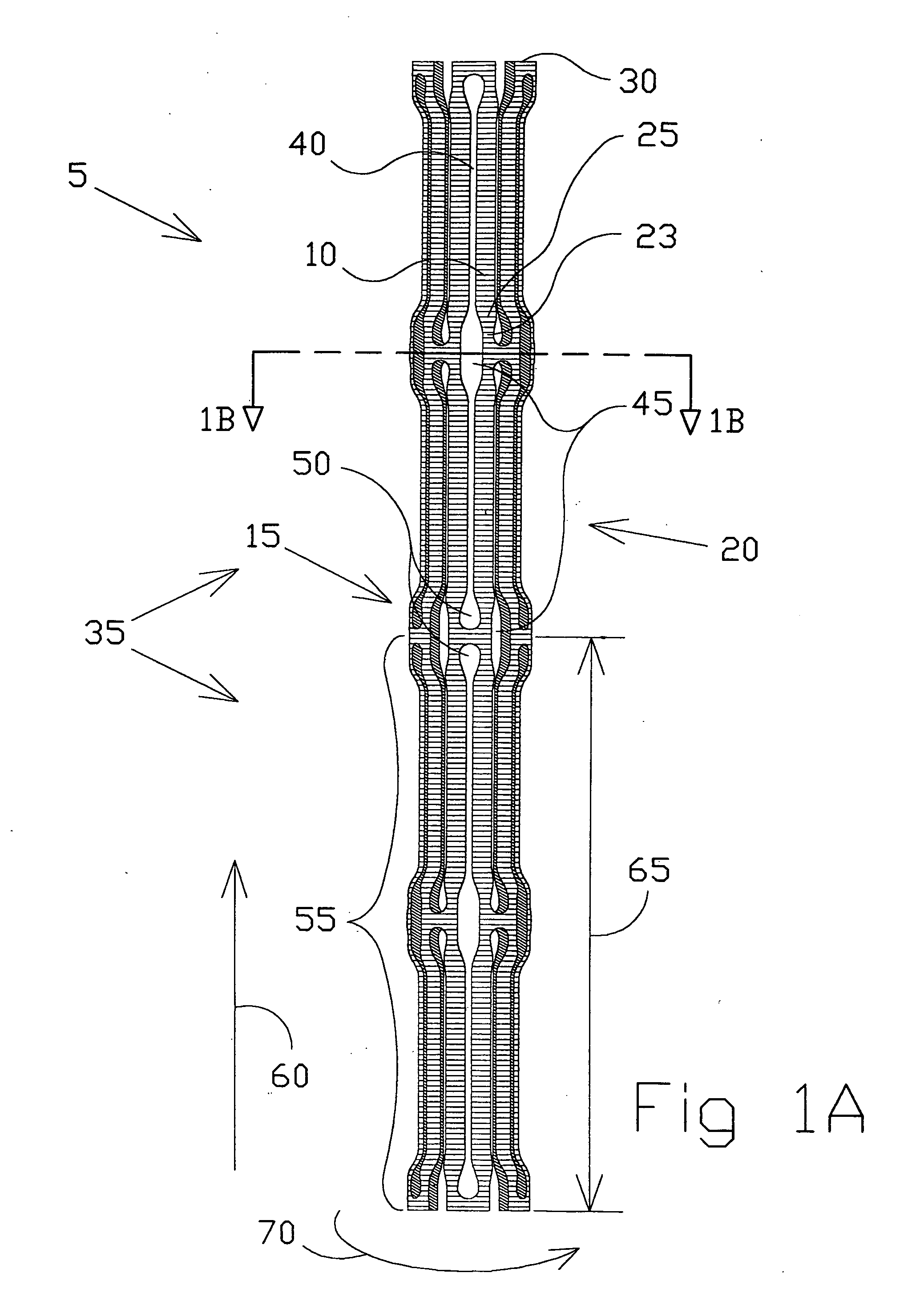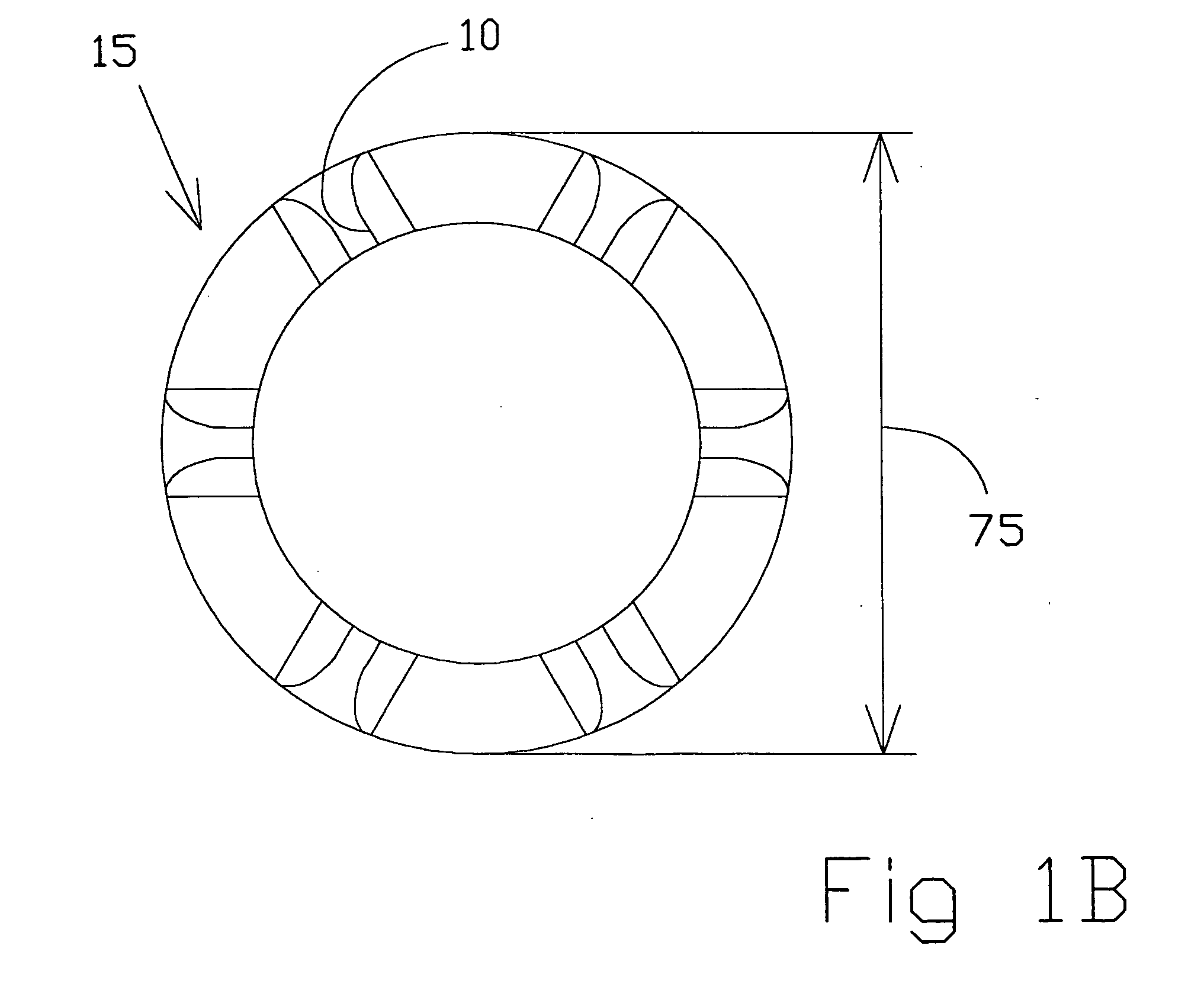Intravascular hinge stent
a hinge stent and stent technology, applied in the field of expandable endoprosthesis, can solve the problems of permanent deformation of the stent, inability to support or balance the radial force, and irreversible crushing of the stent, and achieve the effects of reducing the width, increasing the axial flexibility, and reducing the risk of fractur
- Summary
- Abstract
- Description
- Claims
- Application Information
AI Technical Summary
Benefits of technology
Problems solved by technology
Method used
Image
Examples
Embodiment Construction
[0076]The present invention is a hinge stent that is formed of a plurality of nodes and struts that are arranged to provide enhanced properties over stents identified in the prior art. A balloon-expandable hinge stent is balloon-expandable and noncrushable to provide the accurate placement associated with some balloon-expandable stents and not be susceptible to plastic crush deformation from externally applied forces. A self-expandable hinge stent can provide a large outward expansion elastic force and yet be soft in a crush deformation while remaining elastic in this crush deformation.
[0077]FIG. 1A shows one embodiment of a hinge stent 5 of the present invention in a nondeployed state or inserted state with struts 10 and nodes 15 joined together to form a stent section 20. A stent section 20 is made up entirely of nodes 15 and struts 10 extending throughout the stent section. Each node 15 of the hinge stent 5 includes at least one hinge 23 and at least two transition regions 25; ea...
PUM
 Login to View More
Login to View More Abstract
Description
Claims
Application Information
 Login to View More
Login to View More - R&D
- Intellectual Property
- Life Sciences
- Materials
- Tech Scout
- Unparalleled Data Quality
- Higher Quality Content
- 60% Fewer Hallucinations
Browse by: Latest US Patents, China's latest patents, Technical Efficacy Thesaurus, Application Domain, Technology Topic, Popular Technical Reports.
© 2025 PatSnap. All rights reserved.Legal|Privacy policy|Modern Slavery Act Transparency Statement|Sitemap|About US| Contact US: help@patsnap.com



